“DON’T MOVE HERE.”
A warning. A threat, perhaps. At the very least, a reality check in orange letters, camouflaged among blanket flower, blue columbine and Pacific bleeding hearts.
I picked up this souvenir the last time I was in Seattle at a little shop that Erin found, just around the corner from the place where merchants famously hurl fish at each other. We had just spent a week on Vashon Island in Puget Sound unplugging from our day-to-day life, watching distant river otters from our rented backyard, occasionally hiking the haphazardly engineered stairs down the cliff face to the pebbled beach below. In an idyllic environment like this, it’s natural to let your mind drift to a place where you start trying to figure out what it would take to live this life.
Erin looked up the value of our rental cottage on Redfin. That’s gonna be a “no” unless one of us invents the next iPod. Erin looked up the dilapidated shack down the road, far from the shore line. Still “no,” but maybe we’d only have to invent the next Garfield phone.

The uncomfortable truth about travel, for me at least, is that it’s a respite from reality, not an audition for what reality could be. Even if you vacation frugally like I usually do – rent a small place with a kitchen, cook the bulk of your meals, find out what the locals eat for the rest of them, sit on a couch or a chaise lounge and read a book, ride public transit and walk around, avoid overpriced tourist traps at all costs – it’s only a simulacrum of real life. I don’t have to cut the grass or pay taxes or make excuses for not going to my neighbor’s interpretive dance recital. But inevitably, I’ll dream about how I could make a living in the Pacific Northwest, or fix up an old farmhouse in the Hudson Valley, or retire to the Lake Michigan side of Wisconsin.
This trip to all 30 Major League ballparks is taking me to a lot of places I’ve previously fallen in love with and plenty more that I’m bound to find charming. The point of this sabbatical is to escape from reality, leave the day-in-day-out pressures behind, get fully invested in something completely different and see it through to completion. To that extent, it’s necessary to be present, forget about home for a little while and just take it all in.
It’s a rare pleasure to wake up without an alarm, especially after my nearly 24 hour day traveling from Columbus to Denver to Seattle. Regardless, I was out of bed by 7:30, opting out of hotel breakfast in favor of a couple of room-brewed cups of Starbucks and a few quick work emails. I dedicated the rest of my morning to posting my dispatch about the previous day’s game at Coors Field rather than venturing out to explore as much of Seattle as I could in the short time I had. I took excellent notes on my phone while in Denver, so getting the post cleaned up and adding photos was a breeze.1
I spent my last few minutes before noon formulating a loose plan for passing the time until gates opened at T-Mobile Park at 4:40 p.m. I knew I couldn’t get too ambitious, so I figured I’d keep it simple and stay close to the SoDo neighborhood adjacent to the ballpark. Not Seattle’s trendiest area, but fun is where you find it and make it.
The Link train from SeaTac Airport to the Stadium station takes about a half hour. I spent most of that time looking down at my phone, the vintage-inspired Mariners cap I picked up two years ago shielding me from eye contact with the handful of other riders.
First priority was lunch: I hadn’t eaten in about 24 hours since my bratwurst at Coors Field. I decided on Vinason Pho Kitchen, roughly kitty-corner from T-Mobile Park’s home plate gate. Normally if a restaurant’s name has a food in it, that’s what I’ll order; however, I wasn’t feeling soup, so I got an order of pho tater tots to technically satisfy my rule and lay down a substantial base layer for the rest of the day’s hijinks. Pho tater tots are exactly what you think they are: beef sautéed in pho fat served atop crispy tater tots, drizzled with sriracha mayo and generously garnished with cilantro and culantro. This is something I think I could replicate at home, and I’m excited to try.
After lunch, I still had a few hours to kill, so I walked south on 1st Avenue for about a mile, passing a dozen or so parking lots all charging between $30-50 for game traffic. I don’t know who pays that much to park in these lots, but I feel pretty safe calling them “suckers” if they’re willing to shell out a U.S. Grant for the privilege of hiking a mile to and from the park *and* sitting in traffic both ways. Did I mention the Link train drops off less than a half mile from the gates and costs just a couple of bucks?
Two nights prior, SoDo’s Seapine Brewing Company took home a World Beer Cup silver medal for their German-style pilsner, so I was slightly disappointed that it wasn’t on draft when I showed up at their taproom. Still, I figured if they were capable of brewing one of the best pilsners in the world, the rest of the tap list would likely be impressive. I wasn’t wrong: the Helles lager, Kolsch and Baseball Sauce session IPA were all fantastic. I had a small pang of regret that I only brought a carry-on bag for this trip, as I would’ve liked to smuggle some Seapine cans back in to Ohio in my checked luggage. The detriment of traveling light…
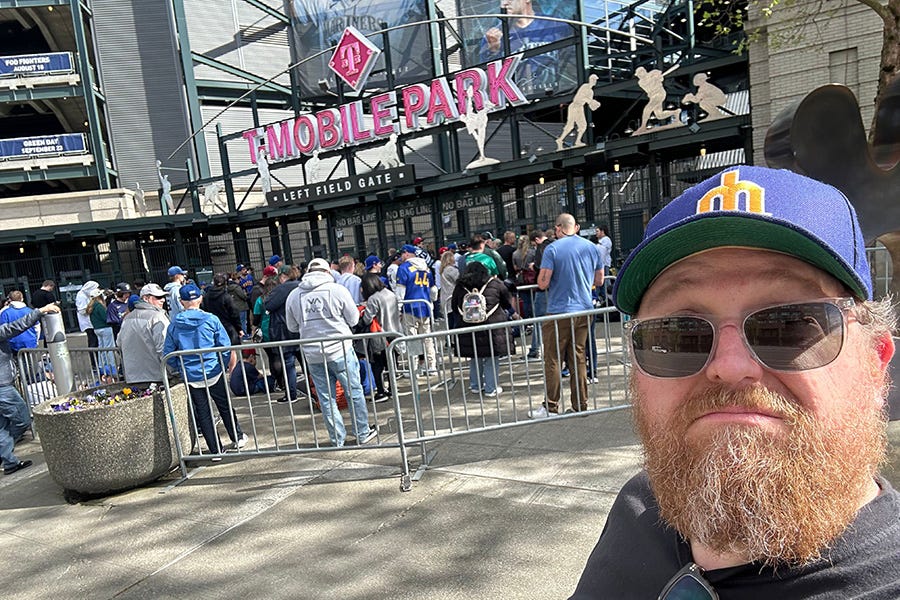
After whiling away an hour or so at Seapine, I made my way back north to the ballpark by way of a hidden skate park under Highway 99, Shawn Kemp’s Cannabis store (Legalize Kemp) and the Starbucks world headquarters. To my surprise at 4:15 p.m., there were long lines at all the entry gates to T-Mobile Park, nearly an hour before most of them were set to open. Thanks to some advance scouting, I knew that the center field gate and T-Mobile Pen, a hangout area below the concourse in left field, would open at 4:40. I found the line for that gate – also quite long – and got in it, striking up a fun conversation with a couple of fellow middle-aged dudes from Chicago who were also working their way around to all 30 MLB parks, though not in a single season like I’m doing. They’re more sensible than I am.
The lines were attributable to the evening’s promotional giveaway: a “Turn Ahead the Clock” Ken Griffey2 #24 jersey available to the first 15,000 fans through the gates. I guess if I were looking for a way to subsidize some of my travel, I could’ve kept mine in its original plastic and put it up on eBay, where they’re selling for anywhere from $40-80 right now. Instead, I immediately put it on and set about exploring the ballpark.
I’ve been to T-Mobile Park once before, in April 2022 with Erin at the end of our Seattle vacation. We didn’t really get around the place, instead parking our butts in our front row seats next to the right field foul pole for pretty much the entire game. In hindsight, that was a mistake. After walking around and taking in the view from practically every section, I’m convinced there are no bad seats in the park. However, where T-Mobile really shines is in the multitude of casual, standing room post-up spots all over the building. There’s the T-Mobile Pen as mentioned above, plus nearly the entire outfield concourse, the Hit It Here Cafe on the club level in right field, as well as the multi-decked staircase leading up to it and the view level above. I don’t necessarily need to be chained to my seat to enjoy a ballgame, so I’m perfectly content to have a ledge for my beer and a nice clear view of the action. T-Mobile Park has ample opportunities for that kind of experience.
The food options in the park are commonly lauded as widely varied and excellent. Fans queued up in a 20 minute line just for Moto Pizza, the funky fusion pizza joint so hyped that you used to have to order months in advance to get a pie. Ubiquitous local seafood chain Ivar’s has several stands in the park if you want to get your fish and chips on. Edgar’s Cantina – named for hall-of-fame designated hitter Edgar Martinez – is the place to get chapulines: toasted grasshoppers dusted with tajin seasoning.
I perhaps made a poor dinner choice, opting for smoked pork belly sliders from the upper deck Holy Smoke BBQ stand. I generally have low expectations for anything claiming to be barbecue at a latitude north of Kansas City, and I should have trusted my skepticism. The sliders weren’t *bad*, but they also weren’t good and definitely not worthy of a ballpark-inflated $15 price tag. I’d have been better off grabbing a Seattle dog – traditionally topped with cream cheese and optional grilled onions, jalapeños or sauerkraut – from one of the street carts outside before or after the game.
The beer selection in the park, however, was phenomenal and affordable. Macro tallboys will set you back a pretty penny, but the Mariners offer an impressive slate of value beers, including 12 oz. cans of pFriem Family Brewers Pilsner – the one beer to best Seapine’s pilsner in this year’s World Beer Cup competition – for $6.50 each. Go through the Amazon-powered grab-and-go, no checkout beverage stores, pick up two pFriem pilsners for less than the cost of a single Big Beer and you’re living the real high life.
I found my cheap seat in the center field bleachers just before lineups were announced. The Mariners were hosting the Arizona Diamondbacks,3 which meant the return of fan favorite third baseman Eugenio Suarez, whom the M’s traded away last winter in a salary dump. The ovation he received as his name was called rivaled the decibels reached for any of the current Seattle nine, save for perhaps phenom center fielder Julio Rodriguez.
The Mariners put an early charge into the crowd of nearly 34,000 courtesy of a first pitch homer from leadoff man Josh Rojas in the bottom of the first inning. All of the runs in this game were scored via the home run, with Mariner DH Mitch Garver blasting a solo shot in the second inning, Arizona shortstop Kevin Newman providing the D-backs’ only run with a homer in the top of the sixth, and Seattle cleanup man Mitch Haniger sealing the deal with a grand slam in the bottom of the same frame.
I bounced around the park for most of the second half of the ballgame, stopping in the team store to pick up a “SoDo Mojo” pin that seemed appropriate for my day spent exclusively in the neighborhood. As mentioned above, there are lots of places to watch the game beyond the fixed seats, almost all of which offer excellent views of the field and the cityscape to the north. You never know what details you might miss if you stay in your assigned seat, so why not take an opportunity to see things from a different vantage point?4

After the final out was recorded in an economical two hours and nine minutes, I beat a hasty retreat for the exit. Fifteen minutes later, I was on a southbound train for an urgent date with the sack. My flight home was scheduled to board at 5:45 a.m., just eight hours after I kicked off my shoes in my hotel room. Unlike the night before, I had no trouble falling asleep, despite the impending doom of a 3 a.m. alarm.
When I wasn’t sleeping on my flight from Seattle to Phoenix and the connector back home, I plowed through Hanif Aburraqib’s new book, There’s Always This Year. I’m not going to write a book review here, other than to say it may be the most beautiful, powerful and compelling thing I’ve ever read about the ideas of home and belonging, of love and grief, of legacy and reality. It helped me to better understand Columbus from the perspective of someone who grew up here, from a community that is marginalized by the developer-class that rules our city and ignored by the politicians in their pockets (until election time.) It even kinda made me want to watch basketball again after a decade-long pause. Maybe if the Pistons ever get good again.
Erin picked me up from the airport around 7:15 p.m. Eastern Daylight Time, roughly 63 hours from when she dropped me off. If a longer vacation gives the illusion of reality, this three-day jaunt offered none of that. Thirteen hours on planes, another three hours on trains, six hours waiting in airports, 20 hours in a hotel room, all for nine hours in ballparks and 12 hours of wandering around. Not normal. Not reality.
Worth it.
The next morning, reality reasserted itself over my carefree flight of wanderlust. As I groggily made my routine trek from the east side of the house to the west, I saw a tarry, black pool on the living room floor and our beleaguered 15 year-old Norwegian Elkhound, Ramona, lying a few feet away, breath labored. She had seemed fine when we got home from the airport the night before, or at least as fine as an elderly dog who had recently been diagnosed with lymphoma could be. Happy to see me return, not barking at me as if I were some intruder, which she had been known to do in the past when I had been gone for an extended period.5
I woke Erin to the bad news and, after a little discussion, we made the decision to say goodbye to our beloved Ramona, almost exactly eight years from the day we brought her home from the Franklin County Dog Shelter. She had been a shell of herself in the last year of her life: limping and stiff-legged, her walks getting shorter and shorter, sometimes not even leaving the front yard, turning down her favorite crunchy snacks in favor of softer fare, deaf as a stone. But still, in many ways she was the same dog she had always been: loyal to a fault, ever-present in the kitchen while we were cooking dinner, writhing for attention while we were eating, barking with unrelenting ferocity at anyone who dared walk on the street in front of our house, reliably warming my side of the bed when I stayed up late to watch whatever post-apocalyptic sci-fi nonsense I was into at the time.
I confess that I wanted Ramona’s last day with us be a perfect one. Hot dogs and American cheese without a hidden steroid pill inside. That dumb smile she had on her face when she was being petted, her tongue clicking and hanging out in sheer joy, too big to fit in her ill-bred snout. No tiny humans around to enrage her, for reasons we were never able to figure out. And definitely no trip to the vet’s office. We would do it at home, her home, the place she felt loved.
It was selfish of me to want that. And if I were going to get what I wanted, it would’ve had to have happened while I was a continent away, taking notes on my phone about the banal things I thought were important enough to document. I didn’t want Ramona to suffer. I didn’t want to suffer. But I wanted more than that. I wanted my lasting memory of her to be a happy one, despite the sorrowful finality of death. That was for me, not for her, and if I have to apologize for anything, that’s it.
Misery makes seconds feel like minutes, hours like days. They say that dogs don’t have a concept of the passage of time like we do, and I hope that’s true. Ramona had been obviously sick on Sunday, but took a drastic turn overnight. The vet was scheduled to arrive first thing Monday morning, which wasn’t soon enough as far as we were concerned. Ramona spent her last hours lying outside, too weak to stand for more than a minute, while we offered whatever meager, ineffective comfort we could muster. When the vet showed up, she told us to take as much time as we needed to say goodbye, but we couldn’t bear the thought of prolonging her agony, or ours, for a second longer than necessary.
That was four weeks ago. Writing a blog post about the 30 or so hours I spent in Seattle seemed inconsequential for the first week while Erin and I adjusted to life without Ramona. By the second week, I had allowed myself to get so engrossed in the urgent demands of my work that I started to feel guilty that I was not sad enough and that Erin would think me some uncaring monster.6 By the third week, between obligations and tasks, the thoughts of what this update would become started forcing their way into my mind. This week, it all comes out. It has to come out.
We’re fortunate to have these things that bring us so much joy. We’re fortunate to remember them when they’re gone. We’re fortunate that we can forget the pain of loss in time. Every time I mow over the patch of grass where she passed, I’ll miss Ramona. Every time I drop a piece of food on the kitchen floor, I’ll miss Ramona. Every time I climb into a cold bed late at night, I’ll miss Ramona.
Soon we’ll gather up the strength to go up to the Franklin County Dog Shelter and give some lost or abandoned mutt a second chance and a forever home. And we’ll go through this whole sad thing again many years down the road, probably wiser, hopefully less selfish, certainly with love in our hearts.
NEXT GAMES:
Atlanta Braves at Pittsburgh Pirates, Friday, May 24, 6:40 p.m., PNC Park
San Francisco Giants at New York Mets, Sunday, May 26, 1:40 p.m., Citi Field
Soundtrack:
I fully intended to do the same in Seattle and follow the same tick-tock format as my last post, but I was not as diligent with my recorded observations. Call it living in the moment, not momentizing my life.
The reference, of course, is to Mariner legend Ken Griffey Jr., whose number 24 was retired by the club, not to his dad, former Mariner Ken Griffey Sr., who wore number 30 with the team in 1990 and 1991. Though with it being “Turn Ahead the Clock” night, perhaps the number will be unretired for Ken Griffey IV?
I’ll see the D-backs play six times this summer, more than any other team by a factor of two. Maybe I should buy a hat?
That’s life advice, folks. Applicable well beyond the ballpark.
Or even sometimes when I just came home from picking up a pizza and disguised my voice to bellow “PIZZA MAN!” from just out of her line of sight.
“Not sad enough” because I’ve been on Zoloft for two months now and it has leveled me out noticeably, considerably and helpfully. Projecting imagined feelings onto Erin fueled by my own perceived inadequacies, well, that’s just classic Justin.
Sorry for the Spotify link – I know a fair number of you don’t fuck with them – but this album came up via the algorithm for me and there’s *nothing* about them elsewhere on the internet except other streaming music outlets. Stanford Morrison… is that a person’s name, a group name, an AI-generated artist? Who/what are you? This record rules.
Requiescat Steve Albini. I used to have a quote by SA in my email signature in my 20s: “If you are really honest with people, you’re never at a loss for words.” I just don’t think there are enough words to adequately describe how influential his music, his writing, his craft as a recording engineer and his ethics have been to me for the 30 years since Nirvana’s In Utero sprang his name across my eyeballs for the first time. I was already a Nirvana fan, but hadn’t dug into music much deeper than the major label grunge that dominated the airwaves in the ‘90s. In Utero was the most visceral record I had heard to that point – I was a freshman in high school when it came out – and I needed more. By the time I graduated, to paraphrase the Minutemen, punk rock changed my life. I had started two bands, published a zine, helped to book and organize a day-long music fest in a Unitarian church basement, and crashed the University of Toledo radio station to hang out with the DJs that were taking the biggest chances on air. Once I got to college, I joined the college radio station for the most important education of my life. That’s where I heard Shellac and Big Black for the first time. That’s where I heard Surfer Rosa for the first time. And Silkworm. And Low. And Man… or Astroman? And The Jesus Lizard. And, and, and. I read “The Problem With Music.” I studied audio recording. I subscribed to TapeOp starting with the 1998 issue with Steve’s interview in it. The owner of our local record shop knew I was such a huge Shellac fan that he sold me a copy of 1000 Hurts a day or two before it officially went on sale. My best friend and radio collaborator, Erik, set up a live interview with Steve where I asked the dumbest possible questions, which he answered politely for an hour before slipping in one last barb that could’ve cost us our FCC license. Right after graduation, I finally got to see Shellac play in Chicago, with Fugazi and The Ex, again thanks to Erik. I read as many of Steve’s interviews as I could find on the internet. I listened to more and more albums that he recorded. I started reading and posting on the Electrical Audio message board, which attracted a whole bunch of weirdo punk rockers like me. I bought Excellent Italian Greyhound the day it came out. I bought Dude Incredible the day it came out. I read Mariobatalivoice and used his recipe for mayonnaise a couple of times. In 2008, I earned a decent bonus from my job, and spent about 20% of it on two days of studio time with Steve in 2009. It was one of the greatest thrills of my life. A few weeks later, I saw him at a show in Chicago that my other band played with Bottomless Pit; Steve didn’t remember me, not that I really expected him to after working with more than a thousand bands over the years. I still think he would’ve remembered our drummer. Steve loved drummers. He made drums sound better than damn near anyone. He made our drummer sound like a goddamned god. I didn’t like everything Steve did. I didn’t like a lot of the things he said or wrote just to be provocative. I did like that he owned it all later in life, apologized and tried to be a better person. I like to think that’s the last and most important influence he had on me and others. You can be honest, even brutally honest, say what you think, say what you believe. But you can also grow, evolve, change your mind in the face of new evidence, admit that you were wrong and go forward open-minded, curious and empathetic.
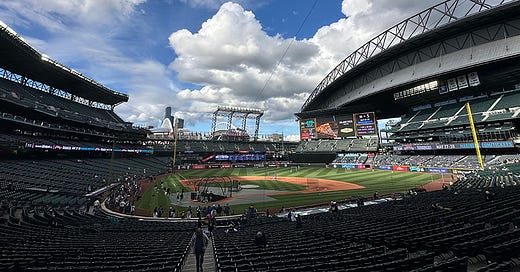


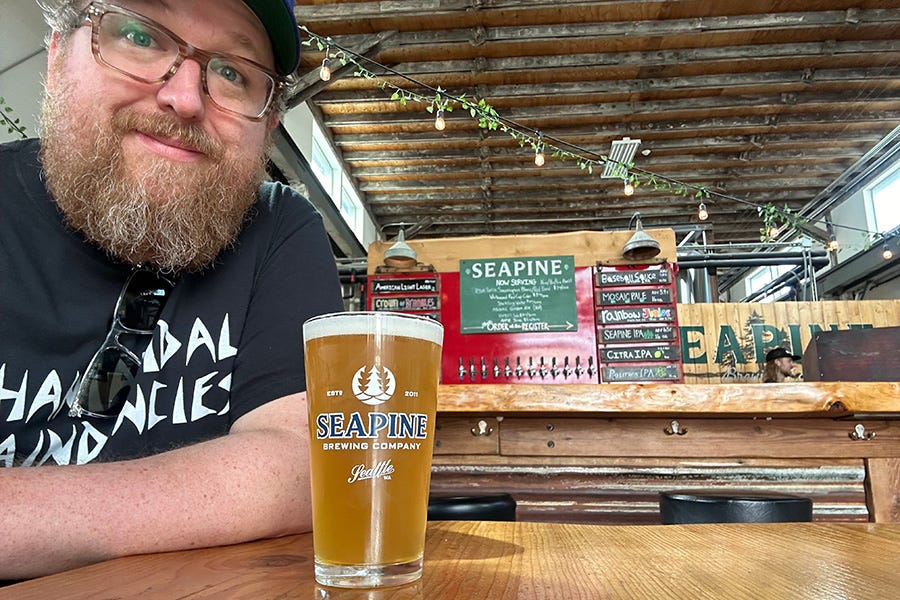
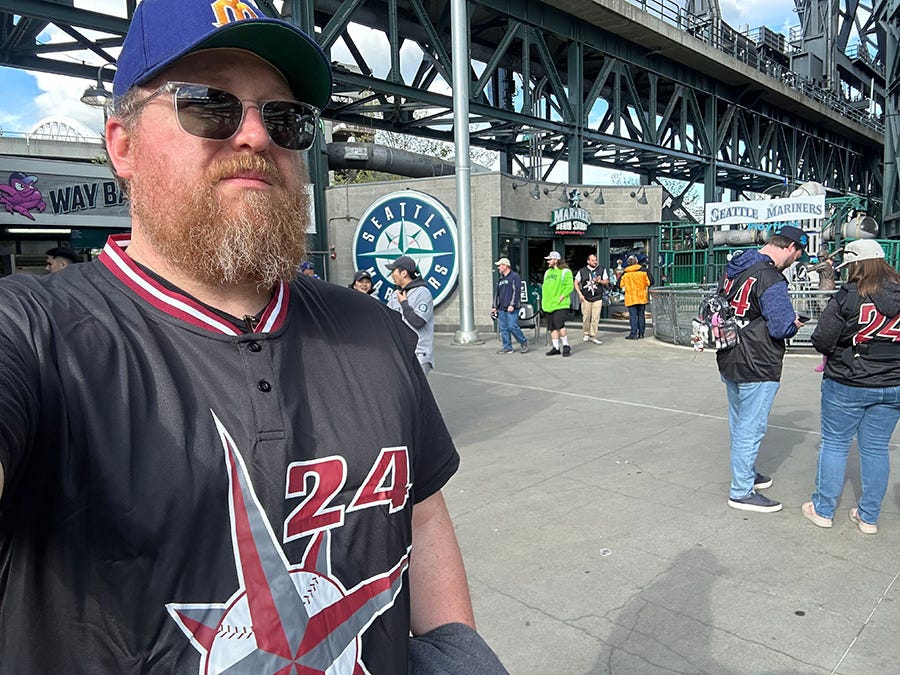
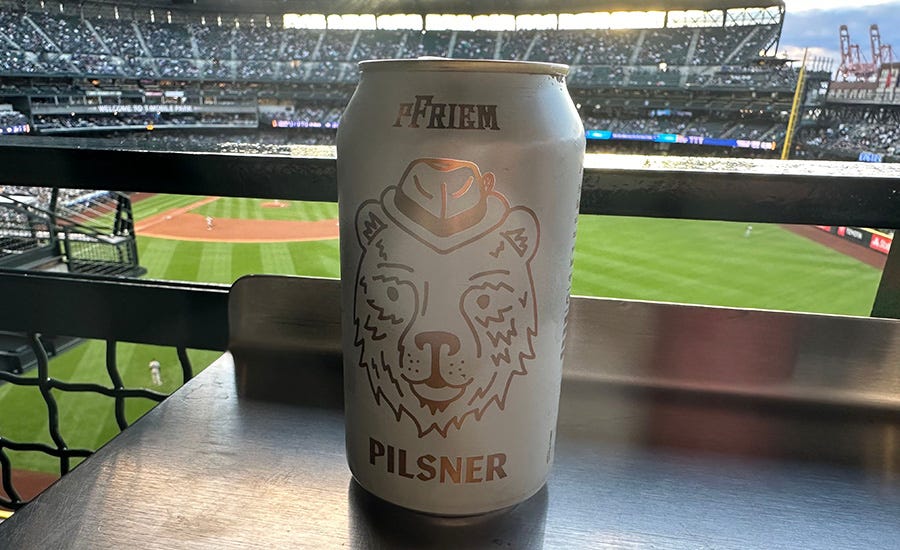
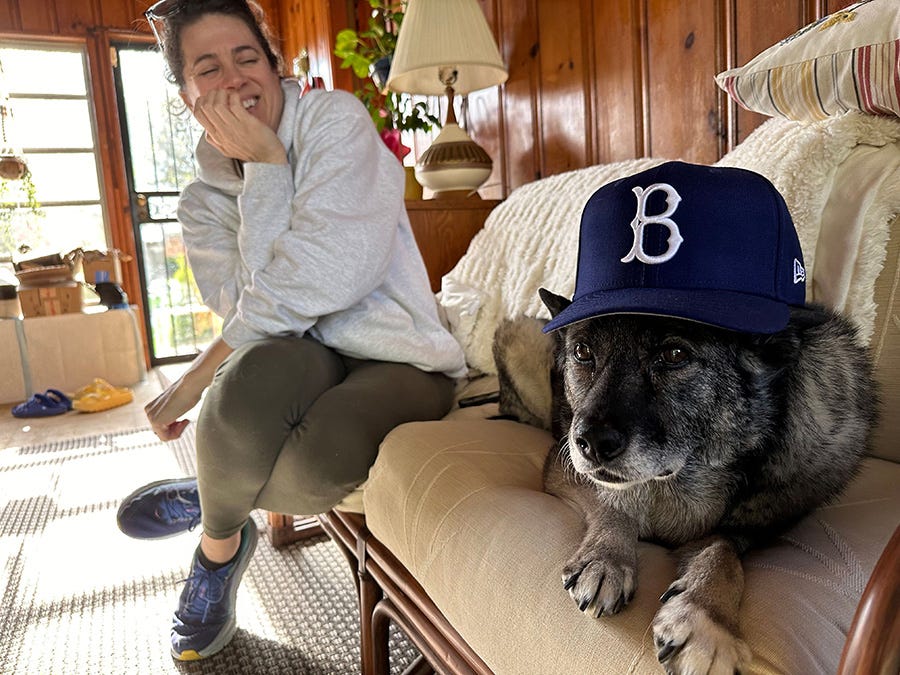
Your writing is so good, Justin!
I’m so sorry about Ramona 💔